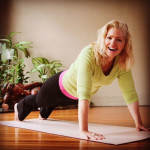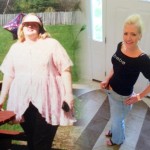
I’m not always able to respond to each email individually, so here are answers to the questions I receive most often.[clear-line]
Q: Does being gluten-free mean being carb-free?
A: Hardly! The low-carb craze popularized by diets such as Atkins, The Zone, Suzanne Somers, etc., continue to leave an impression on the American psyche. I too once believed that in order to get and keep weight off I must eat only fruit, vegetables, and protein. Not exactly my idea of a good time! Fortunately, Diamond Dallas Page and Terri Lange showed me the light when they suggested I give up gluten, a glue-like substance found in modern-day wheat products such as cereals, breads, pastas, cookies, etc. Doctors, nutritionists, even the New England Journal of Medicine have been touting the ill-effects of eating gluten for years. All I know is, when I took gluten out of the equation, my joints stopped aching, I had significantly more energy, and the weight began to noticeably peel off. This has also been the case for clients I advise to give the G-word a rest. My mom, who has never had a weight issue, dropped 20 pounds in less than a year, simply by switching to gluten-free breads and cereals.
Bottom line: I’m not really painting the whole picture when I say I “gave up gluten.” What I mean is, I’ve exchanged the irritating, aging, bloating, and all-around aggravating products that I consumed with gluten in them for breads, pastas, desserts, cereals, and other good foods that contain no irritating, aging, bloating, or aggravating ingredients. See the picture clearly now? You don’t have to “give up” anything, simply exchange the ingredients. Yes, many gluten-free products cost more than their wheat-based counterparts. But you’ve seen my before-and-after photos, right?
Eric “Sparky” Collier, a Team DDPYOGA member and co-host of DDP Radio every Wednesday at 9:00 p.m. EST, has put together a great primer of information for those starting a gluten-free lifestyle.
Q: Do you count calories or fat grams?
A: No. I didn’t want this in any way to feel like a diet. And the diet industry insidiously sets us up for failure by undermining our natural ability to discern what foods are right for us and how much. When I faced the emotional demons that drove me to binge-eat, I was free to relearn a healthy relationship with food. That meant experimenting with quantity, eating when I was hungry, stopping when I felt satisfied (not stuffed), and agreeing I was no longer going to eat just for the benefit of my taste buds. Food has to both taste good and do something nutritionally for me.
Q: How do you handle emotions and the urge to overeat now?
A: Overall, I’m more mindful of everything, not just food intake and exercise. I’m more dialed into my body in general vs. my eating days, when I was disconnected from it. When I was binge-eating, I acted like the the food wasn’t going into my body but some magical out-of-state warehouse. As an emotional eater, I still have a tendency to want to comfort myself with food when the going gets tough, so I do have to make a conscious effort to be aware of feelings and feel them.
Q: Is DDPYOGA the only form of exercise you do?
A: No. DDPYOGA is my primary form of exercise and what I use to stay fit. But I’m also one of those odd ducks who like to exercise. And the way DDPYOGA strengthened and healed my body has opened me up to trying more forms of movement and activity, including long-distance walking, hot yoga, pilates, and light weight-training. I have a slow thyroid and metabolism, so it’s actually a good thing I’m more active than the average person. I enjoy it, though some days the “I’m too busy” excuses come creeping in. And that’s when I simply listen to the excuses (usually each one of them is logical and valid) and then do the workouts anyway. I’ve never regretted doing a workout—only not doing one.
Q: How many days a week do you work out?
A: During the first two years, when the weight was coming off, I made sure to do the workouts 5–6 times a week. The duration ranged from 25 minutes to an hour, though most were in the 30-minute range. Nowadays, I’m more likely to get 4 or 5 workouts in a week. And at least one of these is a trip to the gym for cardio on the bike or treadmill, plus weight-lifting. From experience I can say DDPYOGA has never injured me, but weight-lifting has. Therefore, I have had to learn to check my ego in the locker room and lift only light to moderate weights and execute more reps. This works well for me. Sometimes I’ll split activity throughout the day: “Strength Builder” in the morning and a 45-minute walk in the afternoon, or visa versa. And I always begin my day with my personal version of “Wake Up.” My body loves a gentle routine of stretching, a few crunches, broken tables, and downdogs, with a votive candle and mantras playing for ambiance. I wouldn’t begin my day any other way!


No Comments